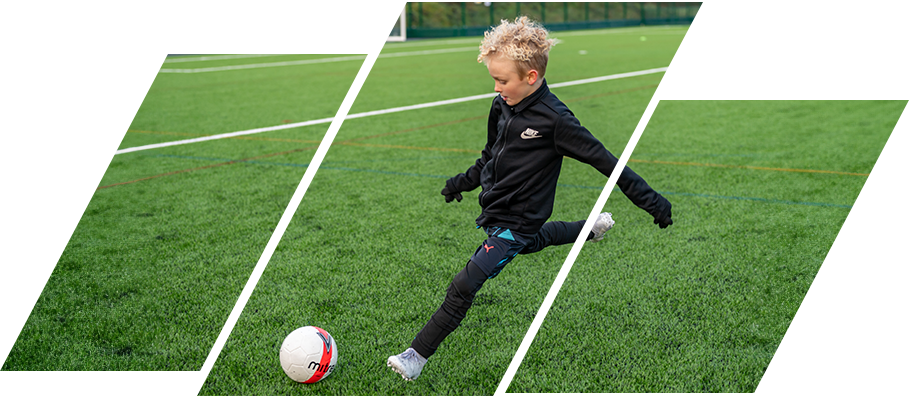To enhance your performance on the football pitch, mastering essential soccer skills is vital.
Skills such as running with the ball, turning, dribbling, heading, and shooting are foundational to player development at any level.
Whether you’re a novice hoping to refine your technique or an experienced player aiming to sharpen your edge, dedicating time to these core areas can transform your game.
Focused training on these skills under the guidance of a skilled soccer coach can provide structured improvement and measurable results over time.
Exploring the use of tools like iSportScouting can also play a significant role in player development and coaching excellence. It equips both players and coaches with insights into performance metrics, offering a clear picture of where one excels or needs extra attention. This data-driven approach to improving soccer performance taps into advanced tactical understanding and can facilitate tailored developmental paths for players of all skills levels.
Incorporating technical drills and exercises specifically designed to develop running with the ball, turning with the ball, and speed dribbling into your training regime is essential. These exercises not only improve your physical ability but also elevate your understanding of when and how to utilise these skills during a match. Consistent practice leads to smoother execution under pressure, ensuring these complex movements become second nature during competitive play.
Key Takeaways
- Enhancing core soccer skills significantly improves on-pitch performance.
- Data-driven tools can pinpoint development areas for targeted improvement.
- Regular, focused practice embeds essential skills into your natural game.
Fundamentals of Soccer
In discussing the fundamentals of soccer, understanding and mastery in the areas of running with the ball, turning with the ball, ball control, and first touch are critical to enhancing your on-field performance.
These skills form the basis for a player’s technical proficiency and have a considerable impact on their ability to maintain possession and advance play effectively.
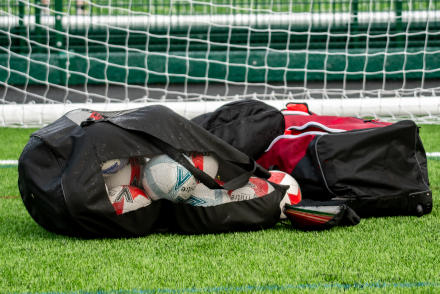
Running with the Ball
When running with the ball, your technique and control dictate the pace of the game. Keep your head up to maintain vision and anticipate opponents’ moves. Warm-ups that include dribbling at speed help develop the required coordination between controlling the ball and sprinting. Practising this in a straight line and then incorporating changes in direction can improve your agility and speed while keeping possession.
- Vision: Keep your head up to scan the field.
- Control: Use the inside and outside of your foot for better manoeuvrability.
- Warm-ups: Incorporate dribbling into your running drills to enhance muscle memory.
Turning with the Ball
Turning with the ball requires swift and efficient movements to change direction while evading defenders. The ability to turn effectively hinges on your ball control and spatial awareness. Utilising turns such as the Cruyff or the “hook and pull” during practice will help you to execute these manoeuvres in match situations smoothly.
- Technique: Practise different turning methods (e.g., inside cut, outside cut).
- Control: Keep the ball close during the turn to prevent loss of possession.
- Spatial Awareness: Know the positions of opponents and teammates when turning.
Ball Control
Ball control is arguably the most significant aspect of soccer, encompassing your ability to receive and manipulate the ball with all parts of the body. Effective ball control leads to higher quality first touches and better retention. To enhance your ball control:
- Practise: Regularly work on juggling and ground-based control drills.
- Control: The ball should be kept within playing distance, ideally a foot or two away.
- Body Position: Orient yourself in a manner that shields the ball and gives options for the next play.
First Touch
Your first touch sets the stage for subsequent actions and can be the difference between maintaining and losing possession. It’s essential to cushion the ball effectively based on the pass’s speed and direction, which requires excellent technique and anticipation.
- Technique: Adjust your body to receive the ball with the appropriate surface.
- Anticipation: Read the game to determine the best touch before receiving the ball.
- Practise: Work on different receiving conditions; high balls, ground balls, and balls in the air.
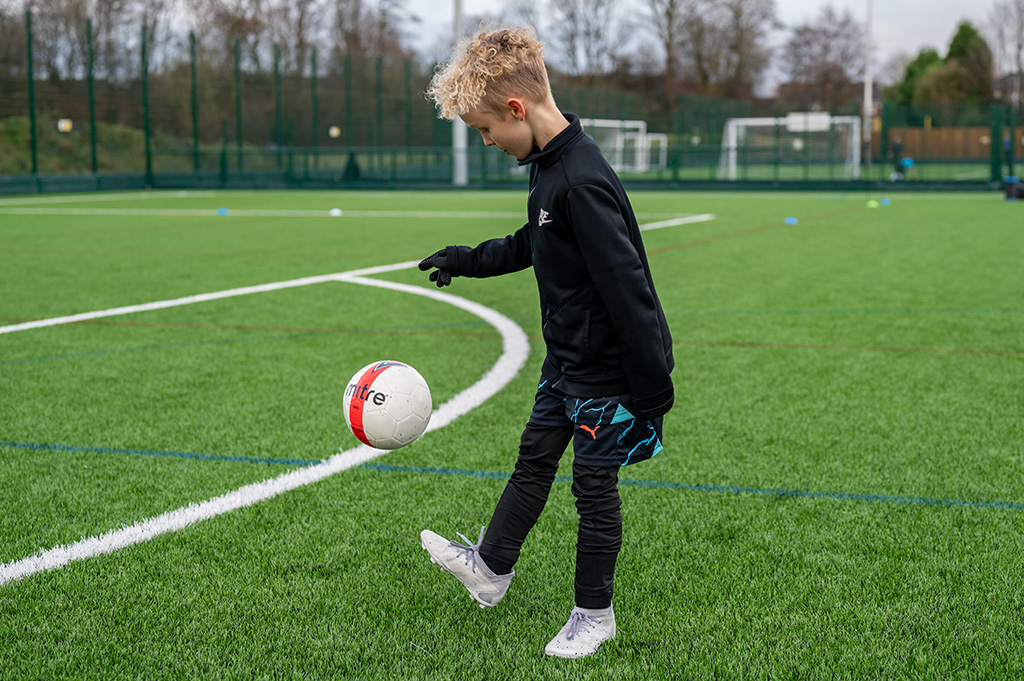
Core Soccer Skills
To elevate your game, mastering core soccer skills is crucial. These fundamentals provide a strong foundation for player development and directly impact your performance during match play.
Dribbling
Improving your dribbling skills is essential for maintaining possession and advancing the ball. Consider these points for effective dribbling:
- Use Your Space: Exploit open spaces by pushing the ball into them with controlled touches.
- Know Your Moves: Practice a variety of dribbling moves like cuts, feints, and changes of pace to keep defenders guessing.
Drill to Try: Set up a series of cones and weave through them, varying your speed and incorporating different dribbling techniques.
Heading
Heading the ball can alter the outcome of a game by enabling you to win possession, clear defensively, or score from crosses.
- Accuracy over Power: Guide the ball purposefully rather than just hitting it hard.
- Timing is Key: Jump and connect with the ball at the optimal moment for maximum control.
Game Situation: Partner with a teammate to practice heading with both attacking and defensive scenarios in mind.
Shooting
Your ability to shoot accurately and powerfully can turn you into a decisive player in attacking situations.
- Technique First: Focus on striking the ball with the correct part of your foot, with body over the ball to keep shots low.
- Practice Under Pressure: Simulate game conditions by shooting during drills that involve close defenders or limited time.
Drill to Employ: Take shots from various distances and angles, using both feet, to become a versatile threat to the goal.
By honing these core skills, you will be better equipped to handle the dynamic nature of soccer, whether you are aiming to outplay a defender, win an aerial duel, or strike a decisive goal.
Soccer Skills Challenge
Transform your players with a focus on six essential soccer techniques.
Performance Enhancement
To enhance your performance in football, focus on developing your speed, tailoring your fitness to the sport, and implementing effective warm-down routines. Each of these components plays a crucial role in optimising your abilities on the pitch.
Speed Training
Speed is a vital asset in football that can give you an edge over your opponents. To develop your speed, incorporate sprinting drills into your practice sessions. These drills should mimic the movements and scenarios you will encounter in a match.
Begin with short distances and gradually increase to longer sprints to build both acceleration and stamina. Ensure you include variations such as directional changes and ball control during sprints to mirror in-game situations.
- Drill Example:
- 10 x 20-yard sprints: Focus on explosive starts and sharp stops.
- Direction change zig-zags: Sprint to cones in a zig-zag pattern, altering direction swiftly.
Soccer Specific Fitness
Your fitness routine should be tailored to the demands of football, which requires a blend of endurance, strength, agility, and flexibility. Construct a balanced fitness program that includes:
- Endurance training: Longer running intervals at moderate intensity to build stamina.
- Strength exercises: Body-weight or resistance training targeting core, legs, and upper body.
- Agility drills: Practice quick footwork through ladder drills or cone exercises.
- Flexibility routines: Incorporate dynamic stretching before workouts and static stretching after.
Example Agility Drill:
- Cone dribble: Set up a line of cones and dribble the ball through them as quickly as possible, maintaining close control.
Warm Down Practices
An effective warm-down is crucial for recovery and injury prevention. After a match or intense training session, take the time to cool down properly with a combination of light jogging, walking, and stretching. This helps to:
- Gradually lower your heart rate.
- Promote the removal of lactic acid build-up in your muscles.
- Reduce the risk of muscle soreness.
Utilising these training tips and practice plans will significantly contribute to improving your speed, overall soccer-specific fitness, and recovery, ultimately enhancing your performance as a footballer.
Player Development
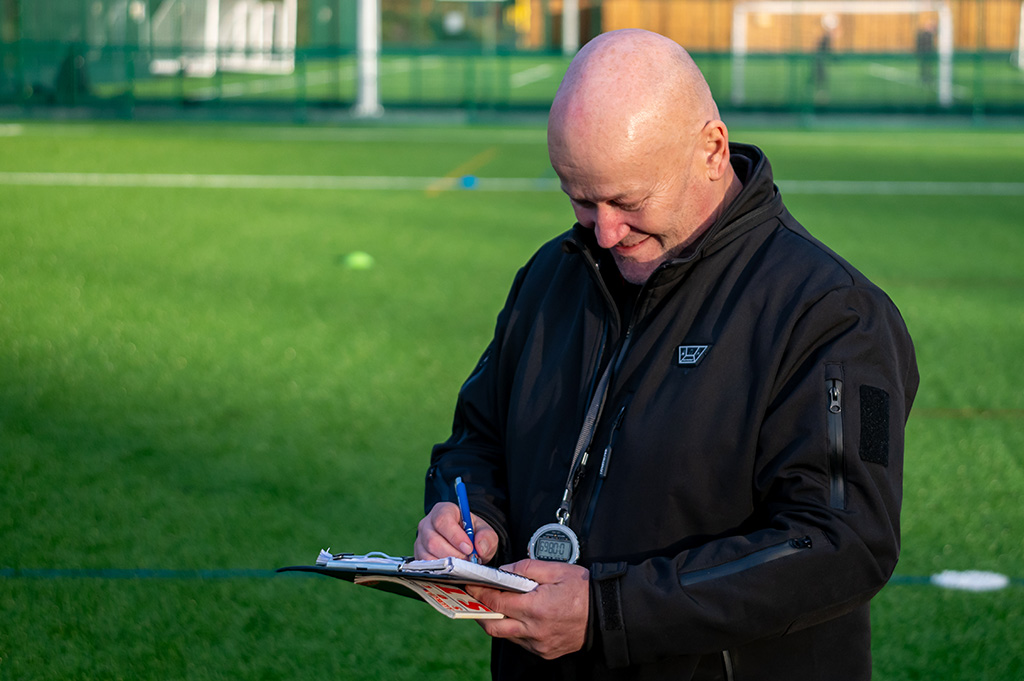
In the realm of football, player development is a meticulously structured process. Your progression from a youthful enthusiast to a professional requires not only shrewd training and dedication but also an understanding of the evolving nature of the sport at different levels.
Youth Soccer Evolution
As you embark on your football journey, youth soccer plays a crucial role in your fundamental development. It’s here that the foundational skills of running with the ball, turning, and dribbling are nurtured.
- Running with the ball: You learn to maintain control at various speeds, enhancing your ability to move the ball effectively across the pitch.
- Turning with the ball: Your capability to change direction swiftly while keeping the ball close is developed, a skill vital for evading opponents.
Training methods have advanced, with a move towards creating a more game-like environment at a young age. Sessions focus on:
- Small-sided games: To increase your touches on the ball and improve decision-making.
- Skills challenges: To target specific areas for improvement like speed, heading, and shooting.
Youth development programmes often incorporate insights from top-tier leagues, ensuring that the training you receive aligns with the professional game’s requirements.
Professional Game Insights
Transitioning to the professional game demands a deep understanding of player development. Here, the specificity and intensity of training heighten. The intricacies of player roles and the tactical aspect of the game come into sharper focus.
- Speed and agility: Your physical attributes are honed to meet the demanding pace of the professional game.
- Technical skills: Your ball control, passing accuracy, and shooting ability are refined to meet higher standards.
Specialised coaching, iSportScouting, and performance analysis tools play a significant part in your development. As a professional, you’re expected to:
- Engage with detailed scouting reports to understand your strengths and weaknesses.
- Apply insights from coaching staff to improve performance and adapt to different styles of play.
Your development as a soccer player is an ongoing process, often supported by dedicated soccer coaches who facilitate your growth and assist in refining your skills to excel at the highest levels. Whether through individualised training programmes or team-based drills, every aspect of your development is geared towards elevating your game.
Soccer Skills Challenge
Transform your players with a focus on six essential soccer techniques.
Coaching Excellence
In your journey to become a successful football coach, it is essential to focus on continuous learning and adapting your coaching methods to foster player development and improve performance.
The following subsections will explore the specifics of coach education, session planning, and utilising advanced coaching materials effectively.
Practice Session Construction
Crafting effective coaching sessions requires meticulous planning. Focus your drills on key match skills like running with the ball, turning, dribbling, and shooting. For organising your practice, consider this structure:
- Warm-up (10 mins):
- Drills to improve peripheral vision and promote dynamic movement.
- Main Session (30-40 mins):
- A variety of drills that replicate match scenarios.
- Emphasis on running with the ball to exploit spaces.
- Cool-down (10 mins):
- Static stretching and feedback.
This structure ensures that players are physically and mentally prepared for the session and that they have time to consolidate skills afterwards.
Advanced Coaching Manuals
Invest in advanced coaching manuals which offer a wealth of knowledge to expand your coaching sessions. These manuals provide detailed insights into session development and player management strategies. When applying these insights, tailor them to your team’s specific needs. For instance, integrate drills for running with the ball from a trusted manual into your sessions to promote speed and ball control. By systematically incorporating these practices, you’ll ensure that your players’ performance levels see substantial improvement.
Remember to always evaluate the effectiveness of each session and be ready to tailor your approach to the individual needs of your players. Your role as a coach is not just about teaching skills, but also nurturing a passion for the game.
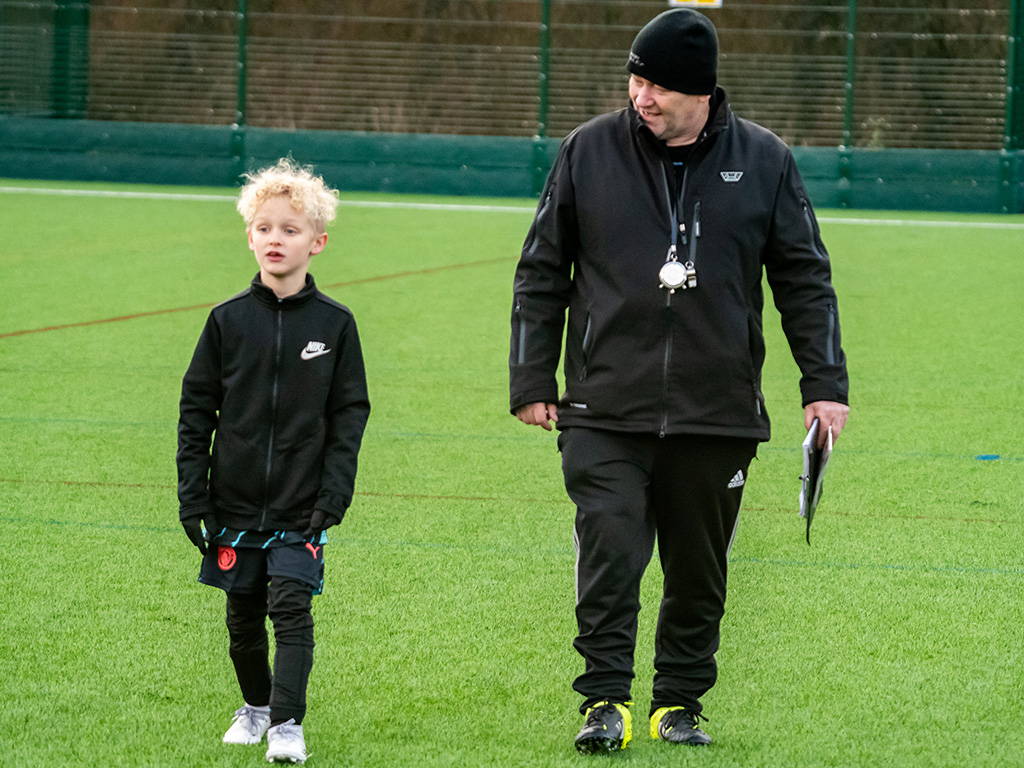
Engagement and Scouting
In the field of player development and performance improvement, engagement and scouting are pivotal. You need efficient tools to scout talent and engaging methods to nurture it.
iSportScouting Integration
To optimise your scouting, iSportScouting offers a robust platform tailored for soccer clubs and academies. By integrating their service, you can systematically analyse player statistics and performance data. You’ll have access to comprehensive player profiles, which are essential in evaluating potential recruits and monitoring the development of current players. Remember to utilise their newsletter for updates, and participate in their surveys to enhance the platform’s offerings.
Soccer Coach Weekly
As a coach, maintaining a subscription to Soccer Coach Weekly can be an invaluable asset for player engagement and development strategies. This newsletter provides a plethora of small-sided games and drills that can help in assessing player skills during trials and training sessions. These drills from the newsletter are particularly effective for observing a player’s running with the ball, turning, dribbling, and shooting under game-like conditions.
Engaging Small-Sided Games
Small-sided games are not just a tool for player development, but they also serve as an engaging scouting method. In these games, you can witness a player’s raw skills and decision-making abilities in real-time. Organise a variety of games that test different skills – from dribbling to shooting – tailored to evaluate specific attributes of players. Incorporating small-sided games in your sessions will not only keep players engaged but also give you a clearer picture of their competencies and areas in need of improvement.
Tactical Advancement
In football, your ability to execute strategic plays can greatly influence the game’s dynamic. Tactical advancement involves not just individual skill, but also coordinated team efforts to outmanoeuvre the opposition. Below, you’ll find key tactics that you can apply to elevate your team’s performance.
Passing Strategies
Effective passing is fundamental to maintaining possession and creating scoring opportunities. As you practise your passing, remember to:
- Utilise both short and long passes to keep the defence guessing.
- Switch play with diagonal passes across the pitch to spread out the defence and open up play.
- Implement one-touch passing in tight spaces to accelerate the pace and disrupt opposition marking.
Creating Space and Movement
Understanding how to create and use space is critical for tactical superiority. Here’s how you can improve:
- Encourage constant off-the-ball movement to generate options for the player in possession.
- Communicate with teammates to orchestrate overlapping runs and dummy movements that draw defenders out of position.
- Define zones on the training pitch to simulate game scenarios and help players recognise when and where to move.
Goalkeeper Integration
The goalkeeper’s involvement in play is sometimes underrated, yet it’s a powerful tool for tactical progression:
- Train your goalkeeper to be comfortable with the ball at their feet to support the backline and initiate attacks.
- Develop their ability to read the game and distribute effectively, be it through rolls, throws, or kicks.
- Conduct drills that integrate the goalkeeper into defensive exercises, promoting their proactive role in changing the direction of play and passing decisions.
By honing these aspects of the game, you’re not just improving your technical ability, but also your understanding of the beautiful game’s deeper tactical nuances.
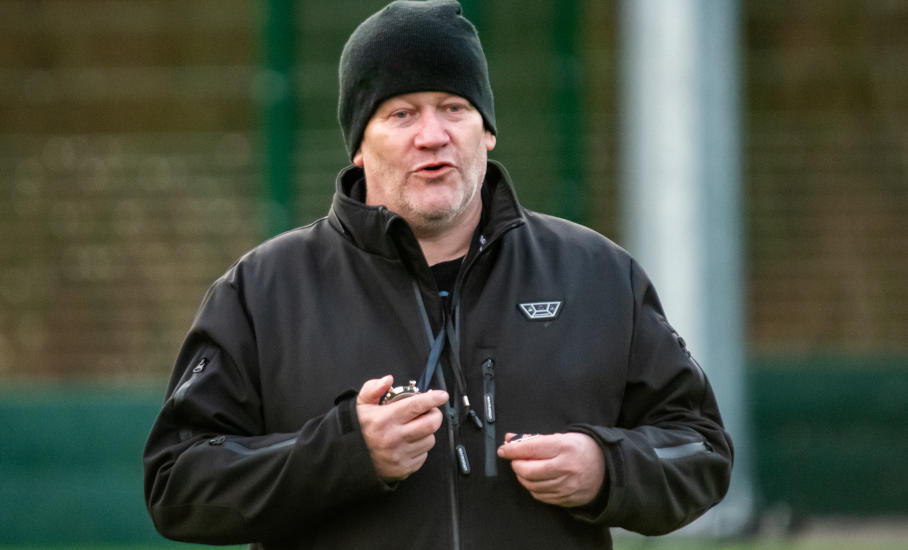
Technical Drills and Exercises
Engaging in technical drills and exercises is pivotal for enhancing your soccer skills and overall player development. Focused techniques and well-structured drills form the cornerstone of soccer coaching and can significantly improve your performance on the pitch.
Coaching Drills Compilation
To excel in running with the ball and sharpen your dribbling abilities, begin with dribbling drills. Set up a grid and practise various turning techniques, such as the inside cut and the Cruyff turn. Increase your speed through agility ladder exercises that demand quick footwork. For shooting, position cones for target practice to refine your accuracy and power.
For heading, incorporate drills that focus on proper technique to direct the ball with precision. Functional drills, like passing in patterns and 1v1 scenarios, will aid in translating these techniques into match-like situations. Always initiate with a dynamic warm up to prepare your body and mind for the session.
Innovative Training Techniques
Apply innovative training techniques to boost your match-day performance. Use drills that simulate match conditions to enhance your decision-making skills and reaction time. Consider drills such as the three-colour game, which requires rapid mental and physical responses, or the rondo, aimed at developing your ability to retain possession under pressure.
Integrate iSportScouting tools to track your progress and identify areas for improvement. For player development, iSportScouting can provide invaluable analytics on your performance.
Incorporate advice from experienced soccer coaches to tailor your training program to your specific needs. Advanced exercises, such as counter-pressing games and chaos interfaces, offer a more complex approach to develop your technical and tactical awareness.
Community and Growth
Within the tapestry of football, community and growth are indispensable elements that foster both individual player development and the collective enrichment of the sport. Your journey from a novice to a seasoned player or even a coach intersects with broader community initiatives and educational systems that play a pivotal role in nurturing talent.
Grassroots Developments
Grassroots football is the bedrock of your growth in the sport. It’s here that you’re likely to get your first touch of a football, often in local clubs or community-driven leagues. These environments provide a crucial platform for young players to hone their skills in dribbling, shooting, and teamwork without the immediate pressure of high-level competition.
Soccer in Education
Your academic institutions can be a fertile ground for development in football. Schools often offer programmes that blend physical education with football training, focusing on crucial skills like ball control and game intelligence. Football in education not only helps improve your performance on the pitch but also instills discipline, camaraderie, and fair play.
Promotion of Soccer Talent
The promotion of talent is central to the growth of football talent. Scouts and local competitions provide you with opportunities to be recognised and scouted by clubs at higher levels. iSportScouting and similar platforms seek to identify and elevate emerging football talent, integrating technology and expert insight to track your progress and highlight opportunities for advancement.
By engaging with these facets of the football community, your skills and understanding of the game are likely to flourish, contributing not just to personal achievements but also to the vibrant growth of football as a sport.
Soccer Skills Challenge
Transform your players with a focus on six essential soccer techniques.
Closing Remarks
In pursuing the Soccer Skills Challenge, you’ve taken significant strides in player development. Mastery of running with the ball, turning, speed, and dribbling is fundamental to your success on the pitch. Heading and shooting are equally critical, contributing to a well-rounded skillset.
Utilising resources like iSportScouting, it becomes clear that consistent practice under the guidance of a skilled Soccer Coach can greatly enhance your proficiency in these areas. Whether you’re a budding Soccer Player or seeking to improve performance, each drill and challenge is a step towards achieving your goals.
Empower yourself with knowledge:
- Running with the ball: Focus on control at various paces.
- Turning with the ball: Practise using different parts of your foot.
- Speed: Incorporate agility drills into your routine.
- Dribbling: Vary your movements to outwit opponents.
- Heading: Prioritise precision and timing.
- Shooting: Refine accuracy and power.
Remember, dedication to your craft is critical in player development. The journey to improvement is ongoing, and every session is an opportunity to sharpen your abilities. Stay committed, remain patient, and trust in the process. Your development as a footballer is a testament to your hard work and passion for the game.
Frequently Asked Questions
In this section, you’ll find detailed answers aimed at improving your skills in various aspects of football. From running with the ball to shooting techniques, these insights will help you develop your abilities effectively.
What drills can enhance a soccer player's ability to run with the ball?
To enhance your ability to run with the ball, practise drills that focus on utilising space and building control at varying speeds. A common drill is the ‘dribble and sprint’, where you push the ball out in front with your first touch and then sprint to catch up, maintaining close control.
How should a training session be structured to improve ball turning skills?
For improving ball turning skills, your training session should include drills that simulate match situations. Start with basic turns using the inside and outside of the foot. Progress to more complex drills involving cones or defenders where you’ll need to turn quickly to evade pressure.
Which techniques are most effective for increasing a footballer’s speed?
To increase speed, focus on plyometric exercises combined with sprint drills. Plyometrics improve explosive power, while repeated sprint sessions enhance your overall pace. Always start with a dynamic warm-up and work on proper running form to maximise velocity and prevent injuries.
What comprises an effective dribbling practice routine?
An effective dribbling practice involves a mix of cone drills for close control and larger space exercises to increase your skill in running with the ball. Mix up your training with varying speeds and directions to mimic game scenarios, emphasising keeping your head up to scan the field.
How can players develop stronger heading abilities?
Developing stronger heading abilities requires practice in proper technique and timing. Drills that involve crossing balls into the box for you to head towards goal are beneficial. It’s also important to work on strengthening your neck muscles to improve power and reduce injury risks.
What are the best methods to teach accurate and powerful shooting in football?
To teach accurate and powerful shooting, focus on technique before power. Start with passing drills that evolve into taking shots from just outside the ’18-yard box. Practise shooting with both feet and from different angles, and gradually incorporate movement, so you’re shooting on the turn or after a dribble.

Anadi James Taylor
CEO - iSportsAnalysis Ltd
I am expert in helping sports clubs and universities with their Sports Video Analysis and their GPS Performance Analysis.
I developed iSportsAnalysis.com with top sports scientists, coaches and trainers to help maximise training gains and to optimise the performance of athletes and teams.
I have developed an online system that has helped over 120 universities, private schools and clubs to reach their true sporting potential; whether that has been from them using the online video streaming services, the online sports video analysis or the GPS performance analysis, the results speak for themselves!
We help you win matches!
You can find out more at iSportsAnalysis.com.
